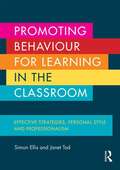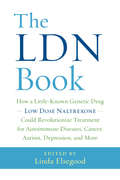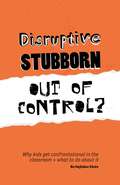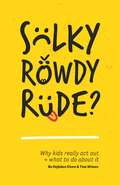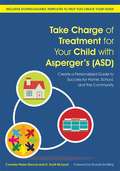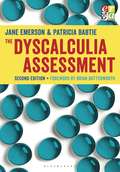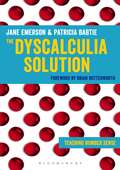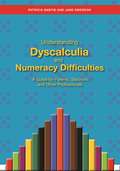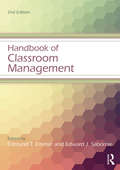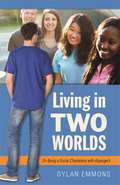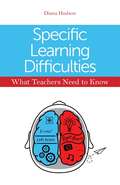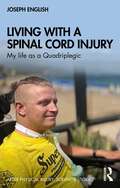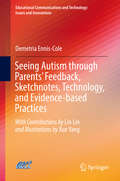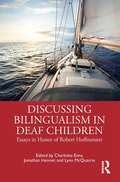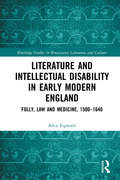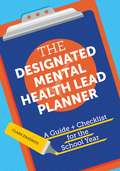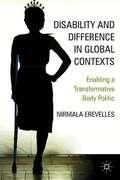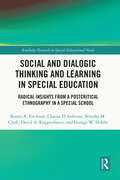- Table View
- List View
Promoting Behaviour For Learning In The Classroom: Effective Strategies, Personal Style And Professionalism (PDF)
by Simon Ellis Janet TodPromoting Behaviour for Learning in the Classroom offers essential support to help you develop capacity and confidence in managing behaviour in the group setting of the classroom. It provides a concise analysis of established behaviour management strategies, recognising that no single approach will work for all pupils and that central to effective practice is an understanding of the different personal attributes and experiences teachers and pupils bring to the classroom Illustrated by examples from the classroom, Promoting Behaviour for Learning in the Classroom uses the tried and tested #65533;Behaviour for Learning#65533; framework to show how teachers#65533; expertise in promoting learning can be used to improve behaviour. Key issues considered include: Developing positive relationships in the classroom Understanding personal style and self-management Effective use of feedback and rewards Using positive correction and sanctions Working with school systems and frameworks for managing behaviour Individual differences and special educational needs Dealing with challenging behaviour Written by experts in the field, Promoting Behaviour for Learning in the Classroom offers much-needed in-depth, realistic support and guidance to show teachers how to improve learning and behaviour in the group setting of the classrooms.
The LDN Book: How a Little-Known Generic Drug — Low Dose Naltrexone — Could Revolutionize Treatment for Autoimmune Diseases, Cancer, Autism, Depression, and More
by Linda ElsegoodLow Dose Naltrexone (LDN) holds the potential to help millions of people suffering from various autoimmune diseases and cancers, and even autism, chronic fatigue, and depression, find relief. Administered off-label in small daily doses (0.5 to 4.5 mg), this generic drug is extremely affordable and presents few known side effects. So why has it languished in relative medical obscurity? The LDN Book explains the drug’s origins, its primary mechanism, and the latest research from practicing physicians and pharmacists as compiled by Linda Elsegood of The LDN Research Trust, the world’s largest LDN charity organization with over 19,000 members worldwide. Featuring ten chapters contributed by medical professionals on LDN’s efficacy and two patient-friendly appendices, The LDN Book is a comprehensive resource for doctors, pharmacists, and patients who want to learn more about how LDN is helping people now, and a clarion call for further research that could help millions more.
Disruptive, Stubborn, Out of Control?: Why kids get confrontational in the classroom, and what to do about it
by Bo Hejlskov ElvénOne of the biggest challenges in the classroom is trying to teach when students act in unexpected and annoying ways. Based on the psychology of how children and people act, this book offers practical strategies for understanding why your students are behaving in the way they are, and how to react in a way that restores peace and harmony in the classroom. With many examples of typical confrontational behaviours and clues for how to understand and resolve the underlying issues, this book will be every stressed teacher's best friend.
Disruptive, Stubborn, Out of Control?: Why kids get confrontational in the classroom, and what to do about it (PDF)
by Bo Hejlskov ElvénOne of the biggest challenges in the classroom is trying to teach when students act in unexpected and annoying ways. Based on the psychology of how children and people act, this book offers practical strategies for understanding why your students are behaving in the way they are, and how to react in a way that restores peace and harmony in the classroom. With many examples of typical confrontational behaviours and clues for how to understand and resolve the underlying issues, this book will be every stressed teacher's best friend.
Sulky, Rowdy, Rude?: Why kids really act out and what to do about it (PDF)
by Bo Hejlskov Elvén Tina WimanChildren can go through difficult phases - this is a natural part of growing up. Conflicts and arguments are nothing exceptional, but rather a part of everyday family life. The authors of this practical and imaginative book show how parents can create consistent and effective structures, methods and responses, so that children can learn for themselves how to practise self-control and cooperation in a secure environment where they both belong and have autonomy. Based on years of experience working with children, including those with special needs, the authors structure their methods around the low arousal approach. With many creative suggestions and real-life examples, this book has the potential to change family life for the better forever.
Take Charge of Treatment for Your Child with Asperger's (ASD): Create a Personalized Guide to Success for Home, School, and the Community (PDF)
by Cornelia Pelzer Elwood D. Scott Mcleod Shonda SchillingEquipping you with the knowledge and tools to become an effective case manager for your child, this book provides straightforward, practical instructions to create a comprehensive guide to your child's unique ASD profile. The individualized guide will: - Provide information about your child's unique profile for anyone who needs it - Serve as a toolbox and teaching template for your child's teachers and support team, with effective strategies to use with him or her - Be an instruction booklet for your child, helping him or her to thrive at home, school and in the community - Act as a case management road map to help you support your child and collaborate with teachers and service providers. The book includes checklists and worksheets, which can also be accessed online, so that you can easily create a personalized guide for your child with autism aged 5-14.
The Dyscalculia Assessment
by Jane Emerson Patricia BabtieThe Dyscalculia Assessment is a tool for investigating pupils' numeracy abilities. It is designed to inform a personalised teaching programme for individuals or small groups of pupils who have difficulties with numbers. The assessment was devised at Emerson House, a specialist centre in London supporting pupils with difficulties in numeracy and literacy. The bestselling first edition of the book, written by Jane Emerson and Patricia Babtie, was the winner of the ERA Best Special Educational Needs Resource 2011.This fully revised and updated second edition features a brand new design, making the step-by-step assessment even easier to navigate and use, wither by SENCOs or those with no specific special needs training, The suggested script for each stage of the investigation that runs alongside the photocopiable assessment sheets, make this book an extremely user-friendly, accessible teaching and learning resource.This book also includes:- an introduction to dyscalculia and co-occuring conditions- guidance on how to conduct the assessment, including tips on behaviours to look out for- information on the equipment you need and how to use it- instructions on how to interpret the results of each stage of the assessment and how to produce a personalised teaching plan- games and activities to engage the pupils and reinforce numeracy skills.The Dyscalculia Assessment is ideal for use with primary school children, but can easily be adapted for older students, and is invaluable for SENCOs, TAs, educational psychologists and mainstream teachers keen to support students with numeracy difficulties in their class.
The Dyscalculia Solution: Teaching number sense
by Jane Emerson Patricia BabtieThis new book by authors Jane Emerson and Patricia Babtie follows on from their award winning book, the Dyscalculia Assessment. Once careful assessment has identified the particular numeracy difficulties your pupils may have, the Dyscalculia Solution provides a practical teaching guide for addressing and solving those difficulties. The Dyscalculia Solution includes step-by-step instructions on how to teach pupils to use whole numbers by talking and reasoning about them, and communicating their thinking in a verbal, diagrammatic and written form. The book includes scripts to emphasise the importance of using the correct language to develop numerical thinking, as well as teaching objectives, activities and games which are important for fostering a positive attitude to numeracy. Each new concept builds on previous understanding so that new facts are derived by reasoning from known facts. The Dyscalculia Solution is ideal for use with primary school children, but can easily be adapted for older students, and is invaluable for SENCOs, TAs, educational psychologists and mainstream teachers, keen to support students with numeracy difficulties in their class. Accompanying materials in both print and electronic formats to support busy teachers by providing lesson plans and worksheets are available with this book.
Understanding Dyscalculia and Numeracy Difficulties: A Guide for Parents, Teachers and Other Professionals (PDF)
by Jane Emerson Patricia BabtieDyscalculia is a specific learning difficulty that affects the acquisition of numerical skills. A far larger number of pupils, while not dyscalculic, fail to acquire the basic numerical skills required for everyday life. Whatever the cause of poor numeracy it is essential that these difficulties are identified and addressed. This book looks at how adults can help identify each child's specific areas of difficulty and describes a multi-sensory approach that can be adapted for the needs of each student to help them better understand numbers and apply that understanding to solve problems. It covers the origins of number sense and how the brain deals with numbers, assessment, planning intervention, what to teach and how to teach it, and how parents can help their children. This straightforward guide will be essential reading for any parent, teacher or education professional working with a child with dyscalculia or numeracy difficulties.
Handbook of Classroom Management
by Edmund Emmer Edward J. SabornieThe field of classroom management is not a neatly organized line of inquiry, but rather consists of many disparate topics and orientations that draw from multiple disciplines. Given the complex nature of the field, this comprehensive second edition of the Handbook of Classroom Management is an invaluable resource for those interested in understanding it. This volume provides up-to-date summaries of research on the essential topics from the first edition, as well as fresh perspectives and chapters on new topics. It is the perfect tool for both graduate students and practitioners interested in a field that is fascinating but not immediately accessible without the proper guidance.
Handbook of Classroom Management: Research, Practice, And Contemporary Issues
by Edmund T. Emmer Edward J. SabornieThe field of classroom management is not a neatly organized line of inquiry, but rather consists of many disparate topics and orientations that draw from multiple disciplines. Given the complex nature of the field, this comprehensive second edition of the Handbook of Classroom Management is an invaluable resource for those interested in understanding it. This volume provides up-to-date summaries of research on the essential topics from the first edition, as well as fresh perspectives and chapters on new topics. It is the perfect tool for both graduate students and practitioners interested in a field that is fascinating but not immediately accessible without the proper guidance.
Living in Two Worlds: On Being a Social Chameleon with Asperger’s
by Dylan EmmonsDylan Emmons has always lived his life in two worlds. Diagnosed with Asperger's at the age of six, his school days were spent struggling to overcome the sensory and social hurdles that made fitting in with his classmates in the 'real world' so hard. An aspiring social chameleon, he attempted to blend in, despite his hidden other world of Asperger's. This book tells the story of his attempt, with the hindsight gained in adult life that it is better to spend energy learning to be happy, than learning to be 'normal'. By describing the two conflicting worlds of his childhood, Dylan Emmons reveals the reasons behind the actions, mood swings and awkwardness of children on the autism spectrum that can often appear mysterious and unprovoked to neurotypical family members, friends, teachers and professionals.
Living in Two Worlds: On Being a Social Chameleon with Asperger’s (PDF)
by Dylan EmmonsDylan Emmons has always lived his life in two worlds. Diagnosed with Asperger's at the age of six, his school days were spent struggling to overcome the sensory and social hurdles that made fitting in with his classmates in the 'real world' so hard. An aspiring social chameleon, he attempted to blend in, despite his hidden other world of Asperger's. This book tells the story of his attempt, with the hindsight gained in adult life that it is better to spend energy learning to be happy, than learning to be 'normal'. By describing the two conflicting worlds of his childhood, Dylan Emmons reveals the reasons behind the actions, mood swings and awkwardness of children on the autism spectrum that can often appear mysterious and unprovoked to neurotypical family members, friends, teachers and professionals.
Specific Learning Difficulties - What Teachers Need to Know
by Jon English Diana HudsonThis book clearly explains what Specific Learning Difficulties (SpLD) are, and describes the symptoms of conditions most commonly encountered in the mainstream classroom: dyslexia, dyspraxia, dyscalculia, dysgraphia, Autism Spectrum Disorder, ADHD, and OCD. The author provides an overview of the strengths and weaknesses commonly associated with each of these conditions, as well as practical suggestions for modifying teaching materials and methods to make learning enjoyable, effective and accessible for students. There are also dedicated chapters on helping students with SpLDs to develop effective revision skills and exam techniques. This straight-talking and accessible guide is ideal for teachers, teaching assistants, and those in school management who want to know more about supporting students with Specific Learning Difficulties.
Living with a Spinal Cord Injury: My life as a Quadriplegic
by Joseph EnglishJoseph English was living his best life when a car accident changed everything. He suffered life changing injuries, and the doctors told him there was no chance of recovery. Facing life as a quadriplegic, Joe lost his business, his romantic partner, and, for a while, his will to carry on. His story, told with extensive contributions from his family and friends, charts his journey from being dead at the roadside to finding something to live for as he recounts his progress from injury to survival. With absolute candour, Joe tells the whole story of his accident, his rehabilitation, and his recovery. Full of advice and suggestions from professionals in the rehabilitation journey, this book is remarkably frank about the struggles Joe has endured, and the times when he felt as if life wasn’t worth living. It addresses all the most difficult issues around life after paralysis, including loss of identity and letting go of the past, as well as providing practical information on topics such as assistive technology, financial claims and legal support. It also outlines the various roles of those in the rehabilitation team. His doctors and specialist practitioners give their unique perspectives into their processes and procedures, helping to demystify them, while Joe’s family and friends ask the kinds of questions readers will be asking too, making this an invaluable guide to what to expect for anyone going through a similar experience. The book shows – by lived example – that there is always more to live for. It is essential reading for those with paraplegia, quadriplegia and other spinal injuries, and their families, friends and care-givers. It is also valuable for neuropsychologists, neurologists and other rehabilitation therapists, as well as students in medicine, nursing, allied health and neuropsychology.
Living with a Spinal Cord Injury: My life as a Quadriplegic
by Joseph EnglishJoseph English was living his best life when a car accident changed everything. He suffered life changing injuries, and the doctors told him there was no chance of recovery. Facing life as a quadriplegic, Joe lost his business, his romantic partner, and, for a while, his will to carry on. His story, told with extensive contributions from his family and friends, charts his journey from being dead at the roadside to finding something to live for as he recounts his progress from injury to survival. With absolute candour, Joe tells the whole story of his accident, his rehabilitation, and his recovery. Full of advice and suggestions from professionals in the rehabilitation journey, this book is remarkably frank about the struggles Joe has endured, and the times when he felt as if life wasn’t worth living. It addresses all the most difficult issues around life after paralysis, including loss of identity and letting go of the past, as well as providing practical information on topics such as assistive technology, financial claims and legal support. It also outlines the various roles of those in the rehabilitation team. His doctors and specialist practitioners give their unique perspectives into their processes and procedures, helping to demystify them, while Joe’s family and friends ask the kinds of questions readers will be asking too, making this an invaluable guide to what to expect for anyone going through a similar experience. The book shows – by lived example – that there is always more to live for. It is essential reading for those with paraplegia, quadriplegia and other spinal injuries, and their families, friends and care-givers. It is also valuable for neuropsychologists, neurologists and other rehabilitation therapists, as well as students in medicine, nursing, allied health and neuropsychology.
Seeing Autism through Parents’ Feedback, Sketchnotes, Technology, and Evidence-based Practices (Educational Communications and Technology: Issues and Innovations)
by Demetria Ennis-ColeSeeing Autism is a comprehensive but easy-to-understand guidebook for caretakers, parents, educators, counselors, therapists, and researchers on various aspects of rearing and supporting children with autism spectrum disorder. It provides textual and visual information on technology tools, symptoms, diagnosis, auditory, sensory, visual, physical, and educational issues, as well as strategies and practices to help children on the Autism Spectrum reach their potential. Seeing Autism uniquely capitalizes on sketchnotes, a visual thinking tool, to communicate information and practices. Sketchnotes provide a unique space that can help the reader think differently, generate a variety of ideas, explore alternatives, and develop constructive points for expressing ideas and developing visual communication aids. This book will assist parents, educators, and professionals in schools (counselors, school psychologists, librarians) who work with children diagnosed with ASD; it will help readers increase their knowledge of autism and gain an appreciation for evidence-based practices and forms of technology that can be used to support learners on the autism spectrum. “This book is a call to arms and is as much a resource for the family friend as it is for the provider coming to the home. In the book Seeing Autism, Dr. Demetria Ennis-Cole helps individuals gain an incredible perspective and learn the struggles, challenges and joys of families rearing children, teens and adults on the spectrum. This book covers the entire spectrum and is a fantastic mix of research, parent perspective, and even sketchnotes for visual learners. The material is well-balanced and is a great resource to support individuals on the spectrum at home, in the community or in the classroom." Brad McGarryFather, Speaker, Author and Director of the Autism Initiative at Mercyhurst University
Discussing Bilingualism in Deaf Children: Essays in Honor of Robert Hoffmeister
by Charlotte EnnsThis collection unites expert scholars in a comprehensive survey of critical topics in bilingual deaf education. Drawing on the work of Dr. Robert Hoffmeister, chapters explore the concept that a strong first language is critical to later learning and literacy development. In thought-provoking essays, authors discuss the theoretical underpinnings of bilingual deaf education, teaching strategies for deaf students, and the unique challenges of signed language assessment. Essential for anyone looking to expand their understanding of bilingualism and deafness, this volume reflects Dr. Hoffmeister’s impact on the field while demonstrating the ultimate resilience of human language and literacy systems.
Discussing Bilingualism in Deaf Children: Essays in Honor of Robert Hoffmeister
by Charlotte Enns Jonathan Henner Lynn McQuarrieThis collection unites expert scholars in a comprehensive survey of critical topics in bilingual deaf education. Drawing on the work of Dr. Robert Hoffmeister, chapters explore the concept that a strong first language is critical to later learning and literacy development. In thought-provoking essays, authors discuss the theoretical underpinnings of bilingual deaf education, teaching strategies for deaf students, and the unique challenges of signed language assessment. Essential for anyone looking to expand their understanding of bilingualism and deafness, this volume reflects Dr. Hoffmeister’s impact on the field while demonstrating the ultimate resilience of human language and literacy systems.
Literature and Intellectual Disability in Early Modern England: Folly, Law and Medicine, 1500-1640 (Routledge Studies in Renaissance Literature and Culture)
by Alice EquestriFools and clowns were widely popular characters employed in early modern drama, prose texts and poems mainly as laughter makers, or also as ludicrous metaphorical embodiments of human failures. Literature and Intellectual Disability in Early Modern England: Folly, Law and Medicine, 1500–1640 pays full attention to the intellectual difference of fools, rather than just their performativity: what does their total, partial, or even pretended ‘irrationality’ entail in terms of non-standard psychology or behaviour, and others’ perception of them? Is it possible to offer a close contextualised examination of the meaning of folly in literature as a disability? And how did real people having intellectual disabilities in the Renaissance period influence the representation and subjectivity of literary fools? Alice Equestri answers these and other questions by investigating the wide range of significant connections between the characters and Renaissance legal and medical knowledge as presented in legal records, dictionaries, handbooks, and texts of medicine, natural philosophy, and physiognomy. Furthermore, by bringing early modern folly in closer dialogue with the burgeoning fields of disability studies and disability theory, this study considers multiple sides of the argument in the historical disability experience: intellectual disability as a variation in the person and as a difference which both society and the individual construct or respond to. Early modern literary fools’ characterisation then emerges as stemming from either a realistic or also from a symbolical or rhetorical representation of intellectual disability.
Literature and Intellectual Disability in Early Modern England: Folly, Law and Medicine, 1500-1640 (Routledge Studies in Renaissance Literature and Culture)
by Alice EquestriFools and clowns were widely popular characters employed in early modern drama, prose texts and poems mainly as laughter makers, or also as ludicrous metaphorical embodiments of human failures. Literature and Intellectual Disability in Early Modern England: Folly, Law and Medicine, 1500–1640 pays full attention to the intellectual difference of fools, rather than just their performativity: what does their total, partial, or even pretended ‘irrationality’ entail in terms of non-standard psychology or behaviour, and others’ perception of them? Is it possible to offer a close contextualised examination of the meaning of folly in literature as a disability? And how did real people having intellectual disabilities in the Renaissance period influence the representation and subjectivity of literary fools? Alice Equestri answers these and other questions by investigating the wide range of significant connections between the characters and Renaissance legal and medical knowledge as presented in legal records, dictionaries, handbooks, and texts of medicine, natural philosophy, and physiognomy. Furthermore, by bringing early modern folly in closer dialogue with the burgeoning fields of disability studies and disability theory, this study considers multiple sides of the argument in the historical disability experience: intellectual disability as a variation in the person and as a difference which both society and the individual construct or respond to. Early modern literary fools’ characterisation then emerges as stemming from either a realistic or also from a symbolical or rhetorical representation of intellectual disability.
The Designated Mental Health Lead Planner: A Guide and Checklist for the School Year
by Clare ErasmusThis planner provides detailed guidance on what a Designated Mental Health Lead needs to do, when they need to do it, and how they can achieve the best results. It gives a clear focus and checklist for each week, including spaces to add your own to-do list, and encourages reflection on the outcomes and impact of your actions on pupils' attainment and wellbeing. It also encourages a focus on your own development and self-care, with space to record what you are currently reading or listening to and one thing you are grateful for that week.In addition to the termly and weekly plans, the book provides short briefs on key aspects of the role, including how to work effectively with teachers, the HR team, the DSL, governors, the pastoral team, Mental Health Support Teams and parents. It is an invaluable resource for all DMHLs tackling the 39 academic weeks.
Disability and Difference in Global Contexts: Enabling a Transformative Body Politic (PDF)
by Nirmala ErevellesThis book explores the possibilities and limitations re-theorizing disability using historical materialism in the interdisciplinary contexts of social theory, cultural studies, social and education policy, feminist ethics, and theories of citizenship.
Social and Dialogic Thinking and Learning in Special Education: Radical Insights from a Post-Critical Ethnography in a Special School (Routledge Research in Special Educational Needs)
by Karen A. Erickson Charna D’Ardenne Nitasha M. Clark David A. Koppenhaver George W. NoblitDrawing on a three-year post-critical ethnography, this volume counters deficit-based notions of disability to present a new social and dialogic theory of thinking and learning for students with significant support needs. Dismantling ideas around ableism/disableism, Social and Dialogic Thinking and Learning offers a uniquely theoretical and conceptual contribution to special education and capability research. Illustrating how students exhibit varied practical, social, and creative abilities, possess agency and perform identity, chapters present a challenge to the restrictive ways in which disability is constructed through prescriptive forms of teacher-student interaction and instruction. The text ultimately offers a powerful re-imagining of how educators and researchers can perceive, observe, and respond to students beyond current institutional and cultural norms. This text will benefit researchers, academics, and educators with an interest in inclusion and special educational needs, disability studies, and the theories of learning more broadly. Those specifically interested in educational psychology and the study of severe, profound, and multiple learning difficulties will also benefit from this book.
Social and Dialogic Thinking and Learning in Special Education: Radical Insights from a Post-Critical Ethnography in a Special School (Routledge Research in Special Educational Needs)
by Karen A. Erickson Charna D’Ardenne Nitasha M. Clark David A. Koppenhaver George W. NoblitDrawing on a three-year post-critical ethnography, this volume counters deficit-based notions of disability to present a new social and dialogic theory of thinking and learning for students with significant support needs. Dismantling ideas around ableism/disableism, Social and Dialogic Thinking and Learning offers a uniquely theoretical and conceptual contribution to special education and capability research. Illustrating how students exhibit varied practical, social, and creative abilities, possess agency and perform identity, chapters present a challenge to the restrictive ways in which disability is constructed through prescriptive forms of teacher-student interaction and instruction. The text ultimately offers a powerful re-imagining of how educators and researchers can perceive, observe, and respond to students beyond current institutional and cultural norms. This text will benefit researchers, academics, and educators with an interest in inclusion and special educational needs, disability studies, and the theories of learning more broadly. Those specifically interested in educational psychology and the study of severe, profound, and multiple learning difficulties will also benefit from this book.
